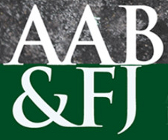Abstract
This paper explores the impact of corporate governance on the demand for intermediated debt (asset finance, bank debt, non-bank private debt) and non-intermediated debt (public debt) in the Australian debt market. Relative to other countries the Australian debt market is characterised by higher proportions of intermediated or private debt with a lower inherent level of information asymmetry in that private lenders have greater access to financial information (Gray, Koh & Tong 2009). Our firm level, cross-sectional evidence suggests that higher corporate governance impacts demand for debt via the mitigation of default risk. However, this relationship is not uniform across all debt types. Intermediated debt such as bank and asset finance debt are more responsive to changes in governance-default risk relationship than non-bank and non-intermediated debt. The implication is that a firm’s demand for different debt types will reflect its governance-default risk profile.
Keywords: Corporate governance, default risk, intermediated debt, non-intermediated debt, endogeneity, 2-stage least squares
How to Cite:
Aldamen, H., Duncan, K. & Khan, S., (2012) “Governance-Default Risk Relationship and the Demand for Intermediated and Non-Intermediated Debt”, Australasian Accounting, Business and Finance Journal 6(3), 25-42. doi: https://doi.org/10.14453/aabfj.v6i3.3
Downloads:
Download PDF
426 Views
1157 Downloads

